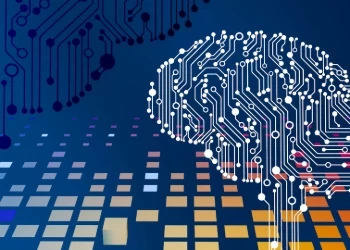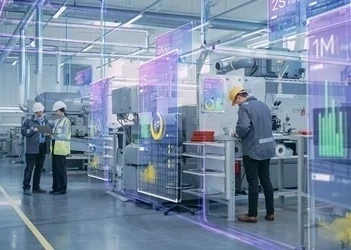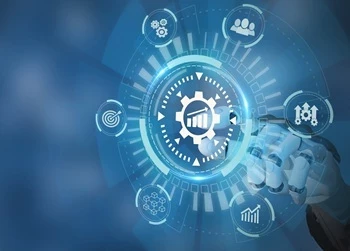Three steps to make process mining work for you
How to leverage process mining and task mining to overhaul processes and achieve operational excellence
Add bookmark
Editor's Note: This article was originally published on January 20, 2022 and updated on July 13, 2023.
There is a lot of buzz in the business world about mining. This does not mean the age-old process of collecting precious materials from the earth, but the more recent trend of using intelligent digital tools to extract precious data from your business.
Process mining vs. task mining
Process mining has been around for over a decade but has really come to prominence in the last few years. At its simplest, process mining is to your business what an x-ray is to your health, it is a tool for seeing beneath the surface and analyzing how everything is working.
Process mining captures data from enterprise IT systems to create a picture of how processes are performing and assess what steps are being executed, where, how and how efficiently. It is an automated approach to process mapping that utilizes your existing business systems to provide solid data to answer those questions.
Task mining, a relative newcomer to the scene, is another approach to process analysis. Where process mining looks at the steps in the processes, examining how they are working together and where inefficiencies might be found, task mining goes a little deeper. It puts that ‘x-ray’ under the microscope and starts to examine the actions that make up each of those steps.
Task mining is granular and utilizes tools such as UI logs and keystroke recordings to analyze the actions users take to complete their part of the process. Everything from mouse clicks, copy and pastes and other routine actions identified through natural language processing and pattern recognition paint a picture of what goes into completing a process and helps to identify where improvements could be made through systems, automation or training.
These tools provide process experts with significantly more data to drive their process improvement initiatives. Good process mining will identify your process steps and inefficiencies, bottlenecks or breakdowns. Task mining will clarify the steps people take, the actions performed and the methods followed.
What you then need to do with this ‘as-is’ process state is work with your teams and process improvement agents to discover what these processes should be. How do you utilize this data to create a smoother, more effective process? Why do staff skip over a certain step or complete steps out of order? What front-line experience is not being captured by the data and what operational understanding is missing on the shop floor? As we explore below, reconciling the data collected and the desired outcome is a human task that requires communication, collaboration and iteration.
WATCH NEXT: How to get the most business value out of process mining
Step 1: process mining success hinges on communication
Once the process and task mining tools are running, the picture of your processes and procedures will become clearer. That information is only useful when it is utilized, so gather the data and make it accessible.
Create the ‘as-is’ process, warts and all, from the outcomes of the mining exercises and share it with your teams. Use an effective process intelligence tool that lets them examine the maps and really drill down into the activities. Make it visual, easy to access and navigate and add plenty of notes to clarify where the assumptions or results have been drawn from.
Step 2: process insights drive collaboration
Once you have clarified the process based on the data, give your staff a way to provide feedback. Engaging your teams gives them a chance to review what the data has shown and elaborate on the why and how of their process execution. This will give you a window into what happens, providing insight into what the data says and a clearer picture of the underlying influences, from available systems and tools to training, habits and assumed knowledge.
A great process platform will also invite solutions, allowing the process users to suggest how the various bottlenecks, breakdowns or inefficiencies could be addressed. Give a voice to those who know the process best and compare their ideas with the data you have accumulated for optimal results.
WATCH NEXT: Prevent the loss of institutional knowledge with process management
Step 3: embrace iterative continuous improvement
With the processes clarified and examined by the stakeholders, it is time to put what you have learned into practice. Consider the data from the mining tools and the feedback from the teams and begin to adjust the tasks, actions and activities in your processes.
Good process and task mining will highlight the most key pain points and they should be prime candidates for improvement. Identify the best solutions and begin to put them into place, updating practices, changing sequences and improving systems to reduce the drag on the process overall.
Then re-examine what you have. This is where process and task mining can save considerable time and effort, by producing comparable, verifiable data that objectively tells you what difference your process improvements have made.
These tools can validate automation decisions and provide ROI data for your process initiatives. It is likely that you will not get it right first time, so use the fresh data to generate new ideas, more granular metrics and further options for increasing the efficiency and effectiveness.
READ NEXT: Nintex's guide to developing a center for process excellence
Keep people in the process loop
Process and task mining are technologies that will become more affordable, powerful and versatile. However, it will still be a while before it can compete with the breadth of understanding and insight a human operator brings to the data. That is why it is vital that you balance your technological investment with great people who are passionate about your processes.
When you invest in tools like these, make sure they are supported by people who can utilize the data they produce and action real change out of it through great communication, effective collaboration and a commitment to continuous improvement.































